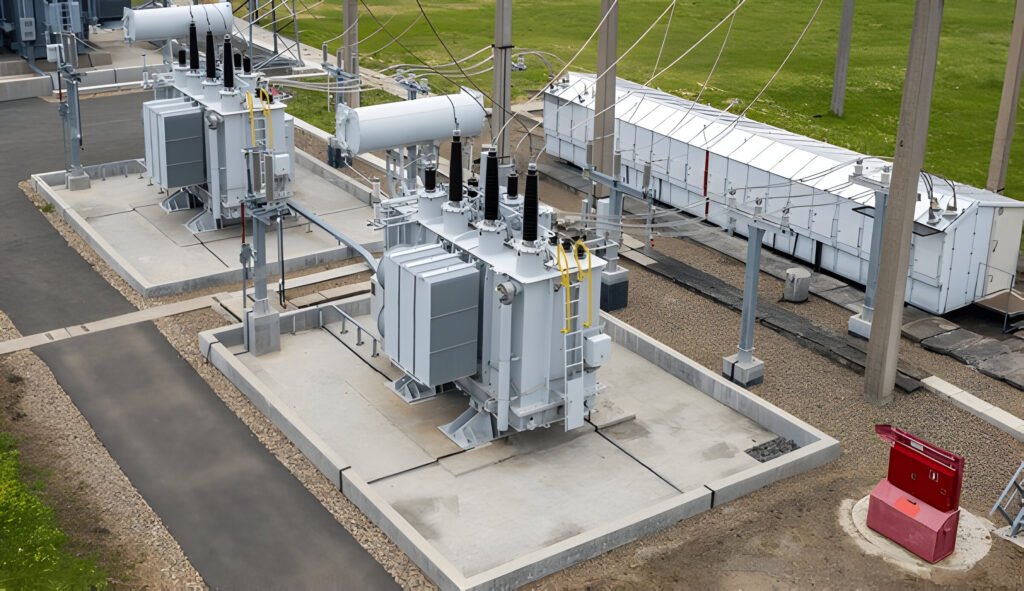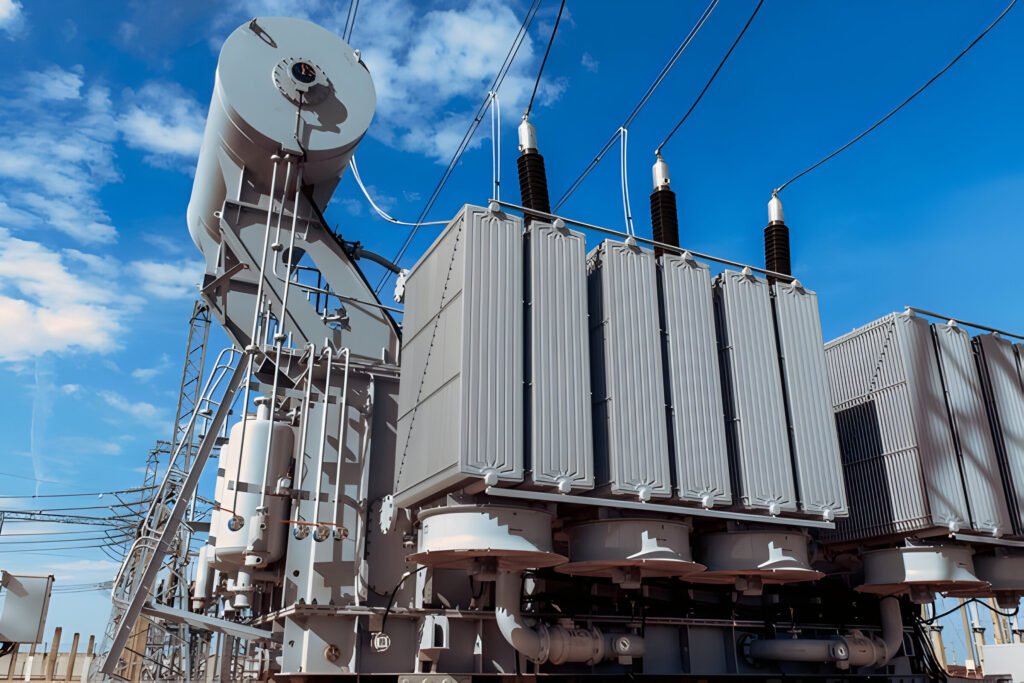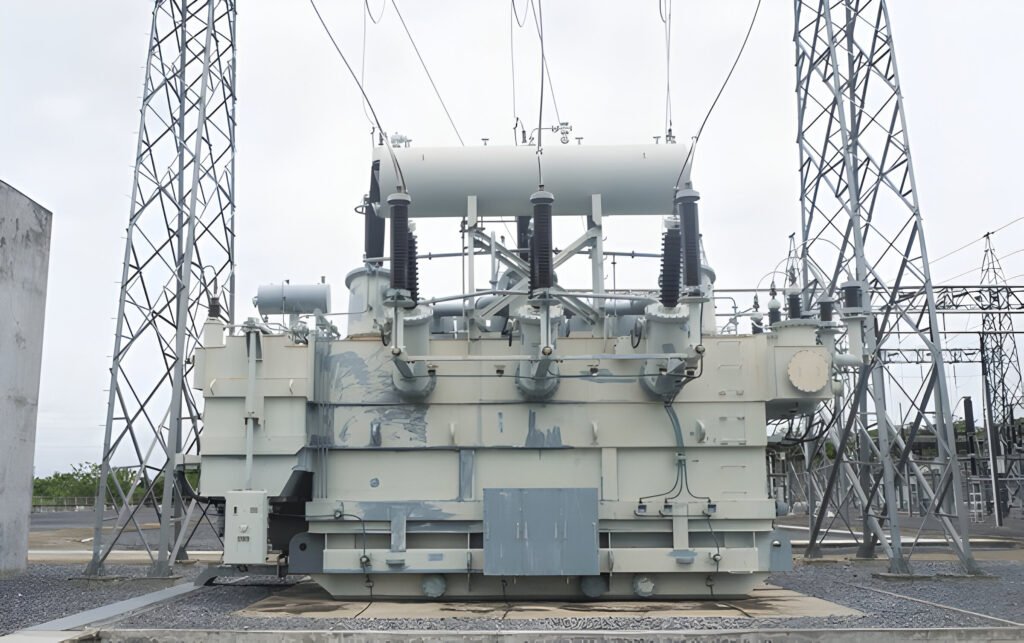What Is the Difference Between a Reactor and a Transformer
Explore the key differences between reactors and transformers in electrical systems.
Read More

Power transformers and distribution transformers serve different purposes in electrical systems. The main difference lies in their applications and specifications. Power transformers handle high voltages and large power capacities, typically used in power generation and transmission. Distribution transformers, on the other hand, are smaller and operate at lower voltages, distributing electricity to end-users.
This article will explore the key distinctions between these two types of transformers, including their size, efficiency, voltage levels, and operating conditions.
A power transformer is a critical component in electrical power systems, designed to efficiently transfer large amounts of electrical energy between different voltage levels.
Power transformers are typically large, oil-filled units capable of handling high voltage levels and power ratings. They operate based on the principle of electromagnetic induction, utilizing primary and secondary windings to step up or step down voltage as required. The primary winding receives electrical energy at one voltage level, while the secondary winding delivers it at a different voltage level, maintaining the same frequency.
These transformers are primarily used in transmission substations and power stations, where they facilitate the transfer of electricity over long distances. By stepping up the voltage at generating stations, power transformers enable efficient transmission of electrical power through high-voltage transmission lines, minimizing energy losses during long-distance transport.
Distribution transformers are designed to step down high voltage electricity from distribution networks to lower voltages suitable for consumer use. These transformers play a crucial role in the final stage of power delivery, connecting the distribution network to end-users such as residential homes, commercial buildings, and small industrial facilities.
Distribution transformers typically operate at voltage levels ranging from 4.16 kV to 34.5 kV on the primary winding and step down to utilization voltages of 120/240 V or 480 V on the secondary windings. They are designed to handle power ratings from 5 kVA to 5000 kVA, making them suitable for a wide range of consumer applications.

| Parameter | Power Transformer | Distribution Transformer |
|---|---|---|
| Applications and Deployment | Used in transmission networks for step-up and step-down of voltage | Used in distribution networks for step-down of voltage to supply loads |
| Transformer Size / Insulation Level | Larger in size with higher insulation levels | Smaller in size with lower insulation levels |
| Iron Losses and Copper Losses | Lower iron losses and higher copper losses | Higher iron losses and lower copper losses |
| Maximum Efficiency | Achieved at full load or near full load | Achieved at 50-60% of full load |
| Voltage levels | Typically high voltage (HV) to extra-high voltage (EHV) | Typically medium voltage (MV) to low voltage (LV) |
| Power rating | Higher power ratings (MVA range) | Lower power ratings (kVA range) |
| Winding configuration | Delta-star, star-star, or star-delta | Delta-star or star-delta |
| Type of Network | Interconnected transmission network | Radial distribution network |
| Operating Condition | Continuous operation at rated load | Intermittent operation with varying load |
| Load Fluctuation | Experiences less load fluctuation | Experiences more load fluctuation |
| Flux density | Designed for lower flux density | Designed for higher flux density |
Power transformers are primarily used in high-voltage transmission networks. These large-scale transformers are typically installed at power stations, transmission substations, and other key points in the electrical grid. They handle high voltage levels, often ranging from 132 kV to 765 kV, and are designed to efficiently transfer large amounts of electrical power over long distances.
The deployment of power transformers requires extensive planning and specialized infrastructure due to their size and complexity. They are often custom-designed for specific applications and may incorporate features such as on-load tap changers for voltage regulation. Power transformers are typically installed in dedicated substations with robust foundations, cooling systems, and protective equipment.
Distribution transformers are employed in the final stages of power distribution, bringing electricity directly to consumers. These transformers are commonly found in residential areas, commercial buildings, and industrial facilities. They operate at lower voltage levels, typically stepping down the voltage from 4 kV to 34.5 kV to the standard utilization voltage of 120/240 V for residential and light commercial use.
Distribution transformers, being smaller and more standardized, offer greater flexibility in deployment. They can be pole-mounted, pad-mounted, or installed in underground vaults.
Power transformers are typically larger in size compared to distribution transformers. Power transformers can range from several meters in height and width to the size of a small building. Their substantial size allows for efficient cooling and insulation.
The insulation level of power transformers is significantly higher than that of distribution transformers. This higher insulation is required to withstand the extreme voltage stresses present in transmission systems. Power transformers often use a combination of oil and solid insulation materials to achieve the necessary dielectric strength. The insulation system must be capable of handling voltage levels that can reach hundreds of kilovolts.
Distribution transformers are considerably smaller in size. Their compact design makes them suitable for installation in urban areas, on utility poles, or in underground vaults. The smaller size of distribution transformers is possible because they operate at lower voltage levels and power ratings compared to power transformers.
The insulation level of distribution transformers is lower than that of power transformers, as they operate at distribution voltage levels, typically below 35 kV. While still important, the insulation requirements are less stringent due to the lower voltage stresses involved. Distribution transformers often use oil or dry-type insulation systems.

Iron losses are typically higher than copper losses at light loads, but copper losses become dominant at higher loads. Power transformers are designed to operate efficiently at higher load levels, often around 60-70% of their rated capacity.
Iron losses are generally higher than copper losses throughout their operating range. These transformers are designed to operate efficiently at lower load levels, typically around 30-50% of their rated capacity, to accommodate varying consumer loads.
Power transformers can achieve efficiencies of up to 99.75% at their optimal load.
Distribution transformers typically reach efficiencies between 98% and 99%.
Power transformers typically handle higher voltage levels, ranging from 33 kV to 765 kV or even higher in some cases. These transformers are designed to operate at transmission voltage levels, facilitating the efficient transfer of large amounts of electrical power over long distances. Power transformers are crucial components in transmission networks, where they step up the voltage from generating stations for long-distance transmission and then step it down at transmission substations for further distribution.
Distribution transformers work with lower voltage levels, usually between 4 kV and 33 kV on the primary side, and step down the voltage to utilization levels on the secondary side. The secondary voltage of distribution transformers is typically 120/240 V for single-phase residential use or 480 V for three-phase commercial and industrial applications. These voltage levels are suitable for direct use by consumers and various end-use equipment.

Power transformers generally have power ratings ranging from 5 MVA (Megavolt-Amperes) to several hundred MVA. These high-capacity transformers are designed to manage large amounts of electric power in transmission networks and power stations. For example, a power transformer in a generating station might have a rating of 100 MVA or more, allowing it to handle the substantial power output from multiple generators.
Distribution transformers have lower power ratings, usually ranging from 5 kVA (kilovolt-Amperes) to 5 MVA. These transformers are sized to meet the power requirements of specific distribution networks and consumer applications. A typical distribution transformer serving a residential area might have a power rating of 25 kVA to 500 kVA.
Power transformers typically employ a more complex winding configuration to handle higher voltage levels and power ratings. They often use a delta-connected primary winding and a star-connected secondary winding, known as the Delta/Star configuration.
In some cases, power transformers may use a Star/Delta configuration, especially in generator step-up applications.
Distribution transformers generally have simpler winding configurations. They commonly use a delta-connected primary winding and a star-connected secondary winding (Delta/Star) or a star-connected primary and a star-connected secondary (Star/Star).

Power transformers are designed to handle relatively stable loads with minimal fluctuations. These transformers are typically found in transmission substations and power stations, where they manage large amounts of electrical power. Power transformers operate most efficiently at 60-70% load utilization, maintaining high performance levels under continuous load conditions.
Distribution transformers experience more frequent and significant load fluctuations. These transformers are closer to end-users and must adapt to changing consumer demands throughout the day. Distribution transformers are engineered to handle a wide range of loads, from light loads during off-peak hours to high inrush loads during peak demand periods.
Power transformers typically operate at higher flux densities compared to distribution transformers. The flux density in power transformers usually ranges between 1.5 to 1.7 Tesla.
Distribution transformers operate at lower flux densities, typically between 1.3 to 1.5 Tesla.
No, power transformers and distribution transformers are designed for different purposes. Power transformers handle high voltage transmission while distribution transformers step down the voltage for end users. Using a power transformer as a distribution transformer would be unsafe and impractical due to the voltage differences.